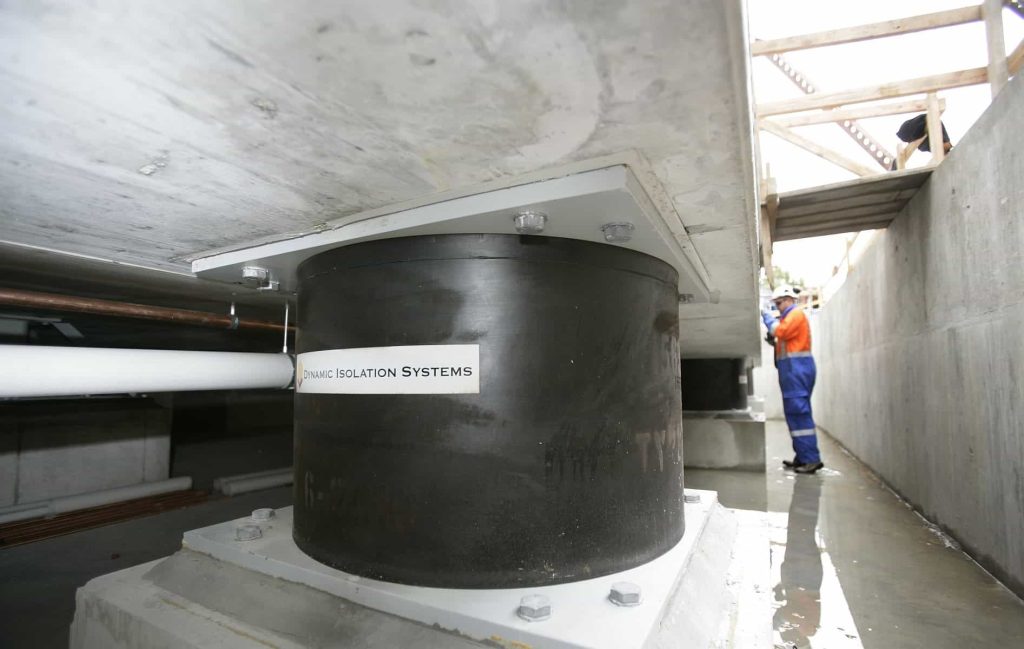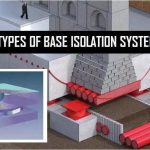What is Base isolation?
Base isolation is a state-of-the-art method in which the structure (superstructure) is separated from the base (foundation or substructure) by introducing a suspension system between the base and the main structure.

Base Isolation for a Building
In context of seismic design of structures, base isolation can be replaced with seismic isolation i.e., the structure above the ground, which is most affected during earthquake is separated from the effects of earthquake forces by introducing a mechanism that will help the structure to hover. The concept of base isolation is quite easy to grasp. It can be explained as a bird flying during an earthquake is not affected. In simple words if structure is floating on its base, the movement of ground will have no effect on the structure.
Purpose of Base Isolation
Wind and Earthquake are the most predominant loads that demands lateral design of a structure. Again, earthquake load is not controllable and it is not practical to design a structure for an indefinite seismic demand. Only practical approach left is to accept a demand and make sure the capacity is more than the demand. The inertial forces caused due to earthquake is directly proportional to the mass of structure and the ground acceleration. Increasing ductility of the building or increasing the elastic strength of the structure is the most conventional method of handling seismic demand. Engineer has to increase the capacity exceed the demand.

Logic of Ideal Base Isolation
Base isolation takes an opposite approach, i.e. to reduce the seismic demand instead of increasing the capacity. Controlling ground motion is impossible, but we can modify the demand on structure by preventing/reducing the motions being transferred to the structure from foundations.
Principle of Base Isolation
The basic principle behind base isolation is that the response of the structure or a building is modified such that the ground below is capable of moving without transmitting minimal or no motion to the structure above. A complete separation is possible only in an ideal system. In a real world scenario, it is necessary to have a vertical support to transfer the vertical loads to the base.
The relative displacement of ground and the structure is zero for a perfectly rigid, zero period structure, since the acceleration induced in the structure is same as that of ground motion. Whereas in an ideal flexible structure, there is no acceleration induced in the structure, thus relative displacement of the structure will be equal to the ground displacement.
No Structure is perfectly rigid or flexible, therefore, the response of the structure will be between the two explained above. Maximum acceleration and displacements are a function of earthquake for periods between zero to infinity. During earthquakes there will be a range of periods at which acceleration in the building will be amplified beyond maximum ground acceleration, though relative displacements may not exceed peak ground displacements. Base isolation is the ideal method to cater this, by reducing the transfer of motion, the displacement of building is controlled.
Displacement occurs at CG of the structures for fixed base structures, which will be approx. two-third height for buildings and at isolation plane for base isolated structures with lesser displacement within the structure. The response of a base isolated structure and a structure without base isolation can be illustrated as shown in the figure below. The displacement and acceleration is controlled by base isolation.

Response of base isolated & non-isolated structure
Basic requirements of an isolation system are
1. Flexibility
2. Damping
3. Resistance to Vertical or other service loads.



Comments are closed